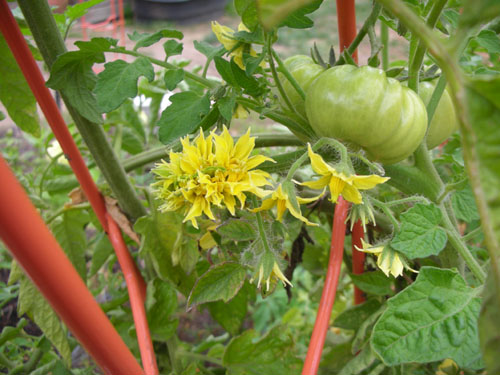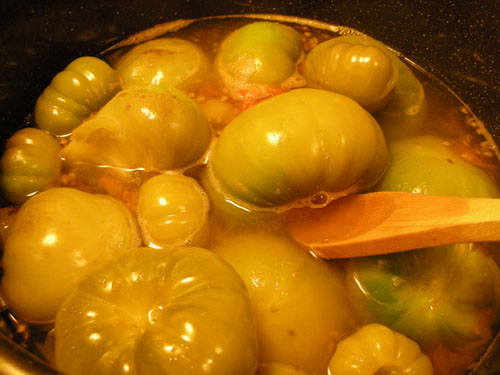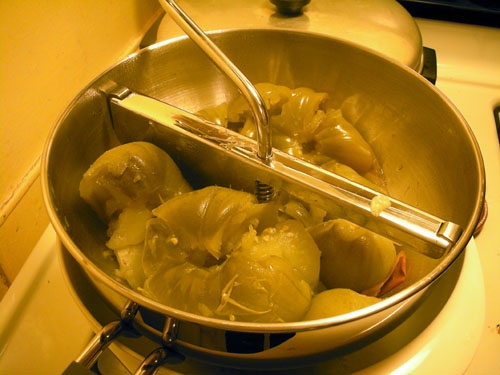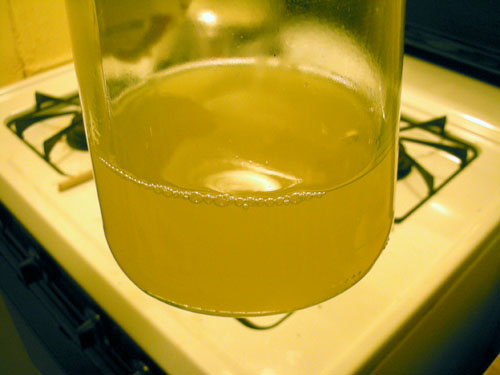This evening I decided to just sort out all the jelly work that needed to be done. That was: making jelly from the quince juice and the green tomato juice, and re-doing the asian pear jelly that did not set up properly.
I tested the two juices I had for pectin by putting a tablespoon of each juice in a little mise-en-place bowl and then adding the same amount of rubbing alcohol. This congeals the pectin and shows you what you have to work with. Predictably, the tomato juice had very little pectin:
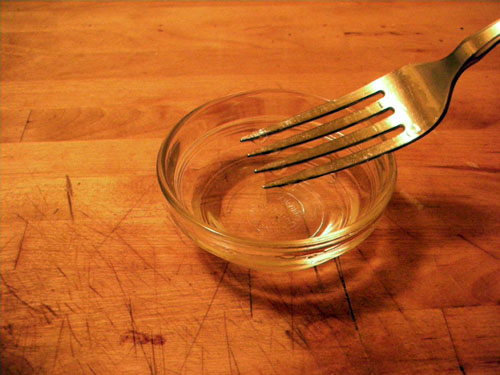
While the quince juice had lots:
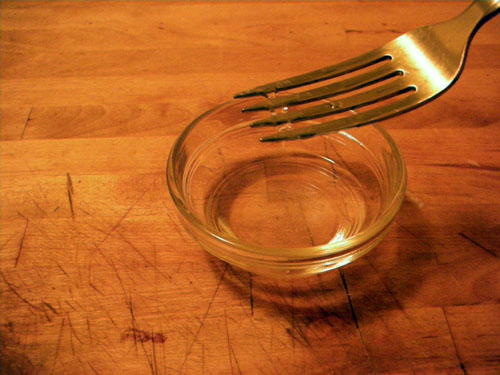
I worked in batches. First I opened the asian pear jelly and cooked that up, adding some pectin (I hadn't added any during the initial cooking). While that was processing in the water bath, I began work on the quince jelly. Noel asked for it to be quite firm, so in addition to the natural pectin I added half a packet of the commercial stuff.
One of the things I love about making jelly is this. You have this sort of cloudy juice that gets even cloudier when you add the sugar:
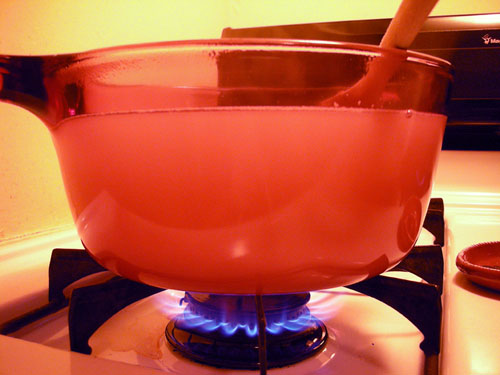
But then a moment later it clarifies into this shiny clear jelly:
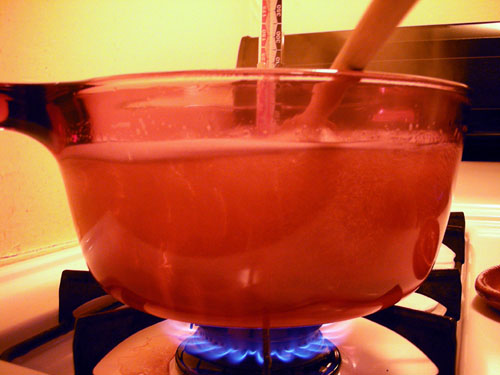
Anyway, I ended up making the tomato jelly very simple: I had four and half cups of juice, to which I added half a cup of cider vinegar, then a packet of no-sugar pectin. That gave me five cups of a very simple, no-added-sugar tomato gel that can be used on meats or as a savoury.
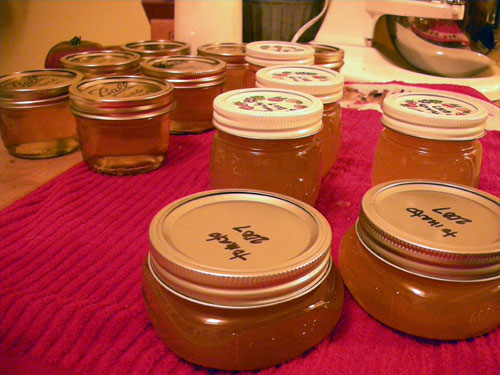
The other theme of this evening was "use up odd ends of jars."
I hate hate hate those wide flat ones at the front: they don't fit nicely in the water bath, they don't work well in the fridge, and even worse, they don't stack nicely on each other: the bottoms are designed so they slide off the stack at the slightest provocation.
Just behind them are the little upright jelly jars, which are quite nice and neat. They're a little bit of a pain to fill because of the narrower mouth, but not bad, and they go in the fridge nicely once opened. And of course they stack properly.
And behind those are the traditional wide-mouth half-pints. Nice jars, very traditional, stack well, and fill easily. They're a bit of a tighter squeeze in the water bath than the little jelly jars, but they work just fine.
